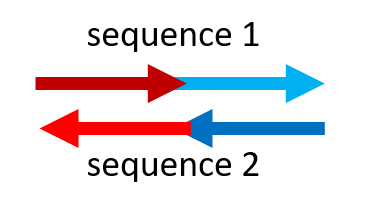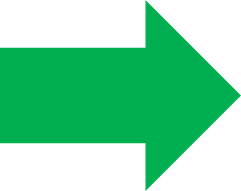Playing with LEGO® made of DNA (... and now let's play)
We can identify a section of a DNA sequence (a 'word') with a letter, such as "A" or "a". We consider "A" complementary to "a" , "B" complementary to "b", and so on (capital letter complementary to lowercase letter). A DNA molecule can have a sequence consisting of a single sectiond or multiple sections in a row (for example "AcB" meaning that it is made of different sections).
DNA molecules bind to each other in an 'antiparallel' way, as if the head of a sequence is bound to the foot of its complementary sequence, and vice versa (the arrowheads of the strands are on opposite sides of the helix). |
 |
Antiparallelism must be taken into account to design complementary sequences (and build your first LEGO® brick). For example, "AB" will bind (is complementary) to "ba" and not to "ab" or "AB".
Now go ahead designing your first brick: you have to choose 2 complementary sequences, selecting from the options with the selectors. Then check if your answer is correct when the molecules meet in the simulation. Your goal is to obtain this structure:

that can be schematized as of below:

(press the green flag to restart the simulations or the STOP sign to stop it. Reload the web page to reset any of your choices).








